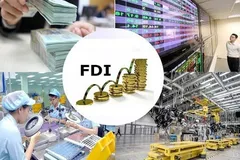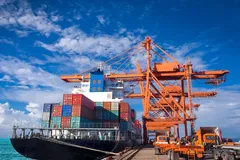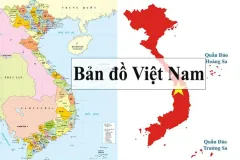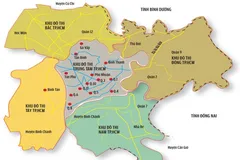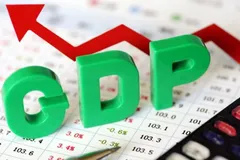
To better understand the implications, Saigon Investment spoke with Mr NGUYỄN VIỆT ĐỨC, Head of Digital Business at VPBank Securities (VPBankS), who shared his insights on the market’s response to geopolitical risks and the potential outcomes of the Vietnam-U.S. tariff talks.
JOURNALIST: - How do you assess the impact of ongoing geopolitical tensions, particularly in the Middle East, on the Vietnamese stock market (VN-Index)?
MR NGUYỄN VIỆT ĐỨC: - Historical data shows that geopolitical tensions, while often dramatic in the short term, rarely have a lasting effect on stock markets—provided they do not escalate into global or prolonged wars. Over the past 50 years, most conflict-related shocks have disrupted trading for just one or two sessions. Take the recent flare-up involving Israel and the Houthis: the VN-Index reacted briefly, but normalised quickly as investors judged the conflict to be contained regionally.
Even in cases where tensions escalate into war, as long as the fighting remains geographically limited and does not involve major economies, the market reaction tends to be short-lived. That explains why the recent rebound occurred—investors broadly believe that the Israel-Iran confrontation will stay confined to the Middle East. The real impact lies in oil prices, but even there we’ve seen some stability.
More serious market disruptions happen when the United States becomes directly involved. In such cases, corrections can last for up to three months. After the 9/11 attacks in 2001 and during the Gulf War in 1992, for example, global markets dropped by around 10–11% and only found their bottom after about 70 days.
At present, oil prices are hovering just above $70 per barrel, which is actually below the average for 2024. As long as prices remain within the $70–80 range, we can conclude that the geopolitical fallout has largely been priced in. Of course, if sanctions come into play, the picture could change. But overall, despite the alarming headlines, the stock market has shown itself capable of absorbing these short-term shocks.
JOURNALIST: - Do you see any parallels between the current situation and what happened in 2022 when the Russia-Ukraine war began?
MR NGUYỄN VIỆT ĐỨC: - 2022 was fundamentally different. When the Russia-Ukraine conflict erupted, the U.S. was facing historically high inflation—not solely due to rising energy costs but also because of massive stimulus packages that had been pumped into the economy post-COVID. Inflation, not the war itself, was the dominant factor dragging markets down.
If we look at history, markets tend to experience their steepest declines during macroeconomic crises rather than during wars. The 2008 financial meltdown, for instance, stemmed from the U.S. housing and credit bubble. Similarly, Vietnam’s sharp correction in 2022 was driven by its corporate bond crisis. It’s these macro-level vulnerabilities—be they policy missteps, asset bubbles, or debt problems—that truly destabilize markets. Wars may coincide with these events but rarely serve as the primary cause.
JOURNALIST: - Besides the geopolitical dimension, investors are closely monitoring the status of the Vietnam-U.S. tariff agreement. What developments should they be watching?
MR NGUYỄN VIỆT ĐỨC: - Investor sentiment was already being tested by uncertainties around the tariff talks even before the Israel-Iran situation triggered further corrections. However, we’ve seen positive signals recently. On June 15, Bloomberg reported that Vietnam had proposed tariff levels in the 20–25% range. The U.S. has responded constructively. Former President Trump publicly acknowledged that Americans can no longer manufacture certain categories of goods—shoes, garments, seafood—all of which are areas where Vietnam holds strong competitive advantages.
If Vietnam secures a final tariff agreement in that 20–25% range, it will bring us in line with Malaysia, and offer a more favourable position than Thailand or Indonesia, neither of which are currently negotiating with the U.S. This would give Vietnam a clear trade edge, not only in the region but also relative to China.
JOURNALIST: - Do you believe Vietnam and the U.S. will reach a final agreement soon?
MR NGUYỄN VIỆT ĐỨC: - I expect a deal to be reached by July, although there are still some uncertainties. Countries like India and Japan began talks earlier than Vietnam, but neither has concluded negotiations yet. Even if Vietnam is making faster progress, the process still takes time.
For context, remember that the U.S.-China trade agreement under Trump took two years to materialize—and was only finalised after he left office. That’s why I think Trump is now pursuing a phased strategy. The U.S. appears to be targeting trade deals with priority partners first—countries seen as cooperative and strategically important, like Vietnam and India. The results of these negotiations could then serve as benchmarks for broader tariff imposition on nations outside the initial round.
Vietnam stands to benefit from this sequencing. If we strike an agreement early, it will position us favourably not just in terms of tariff advantages, but also in the broader trade architecture that the U.S. may be trying to reshape.
JOURNALIST: - Thank you for your valuable insights.






